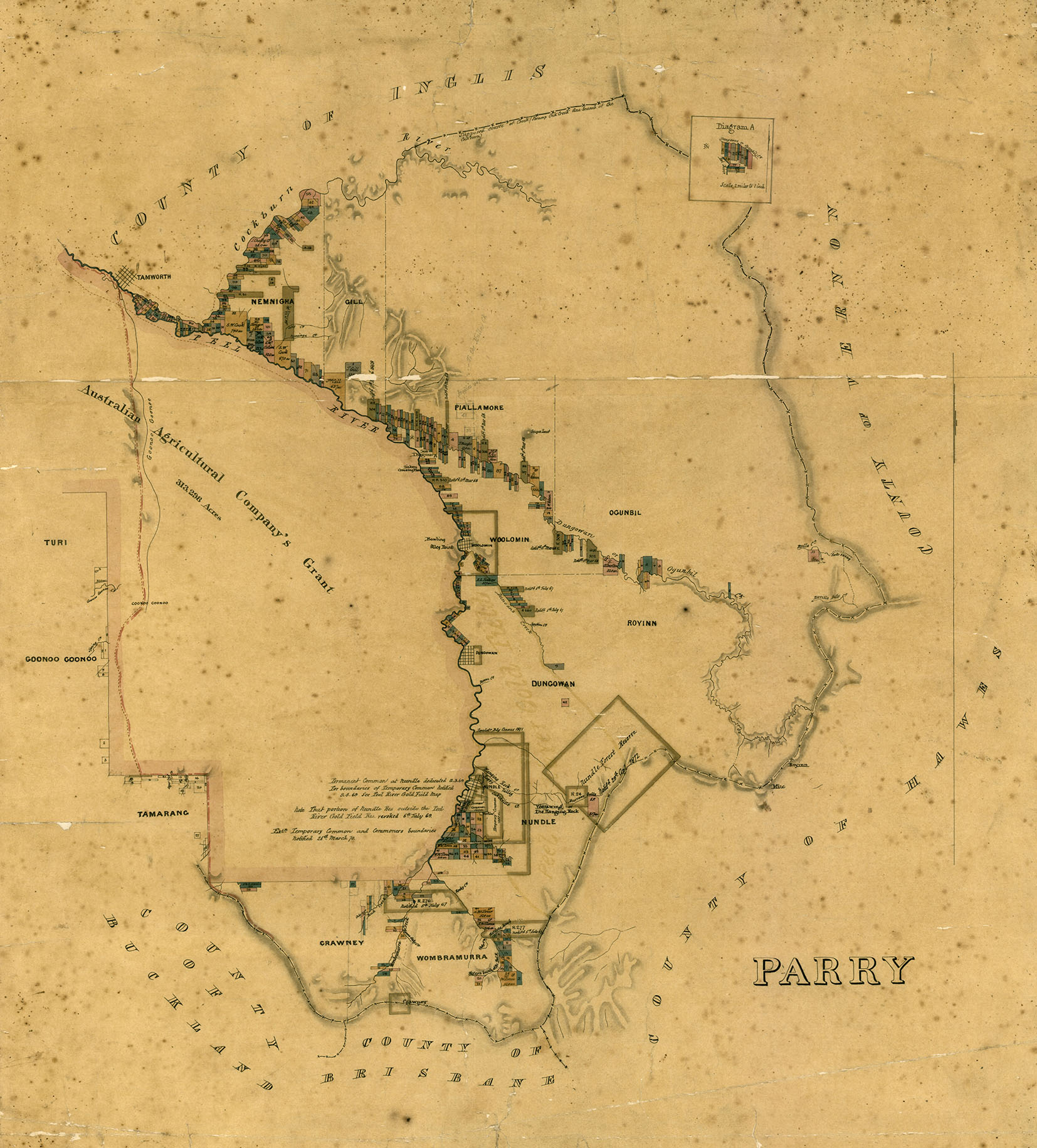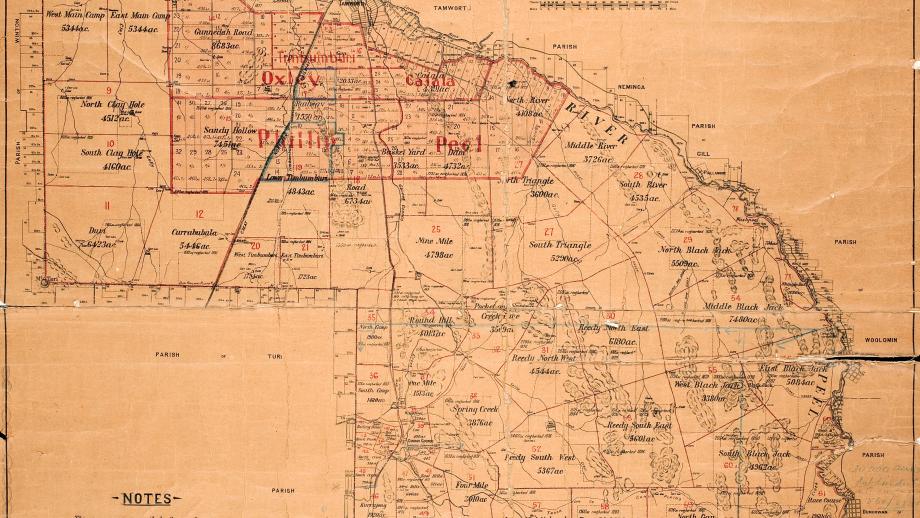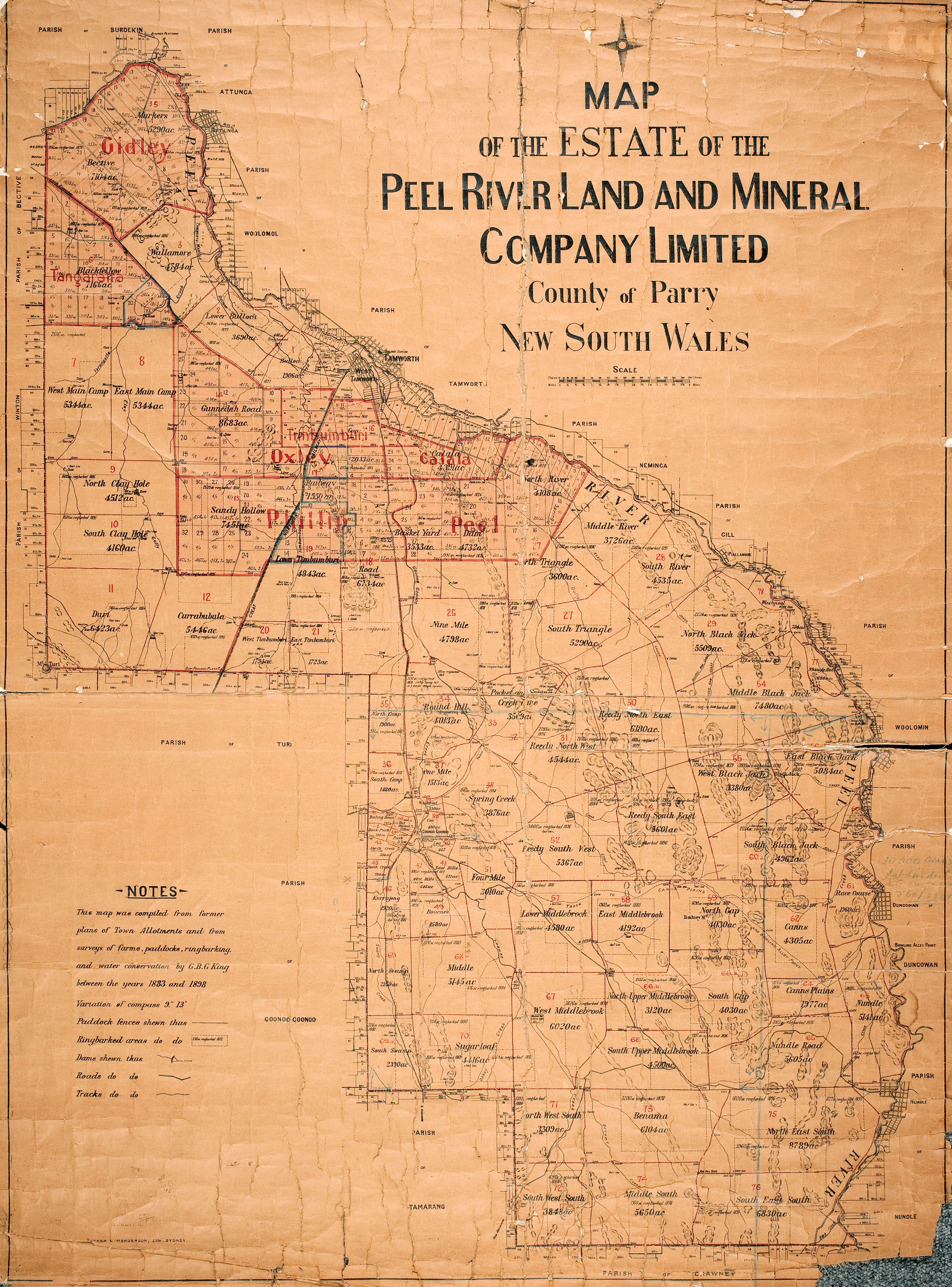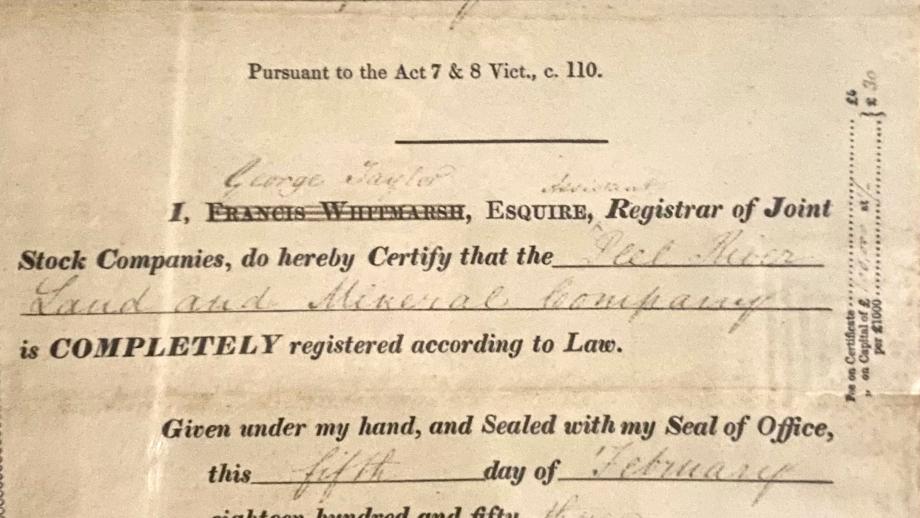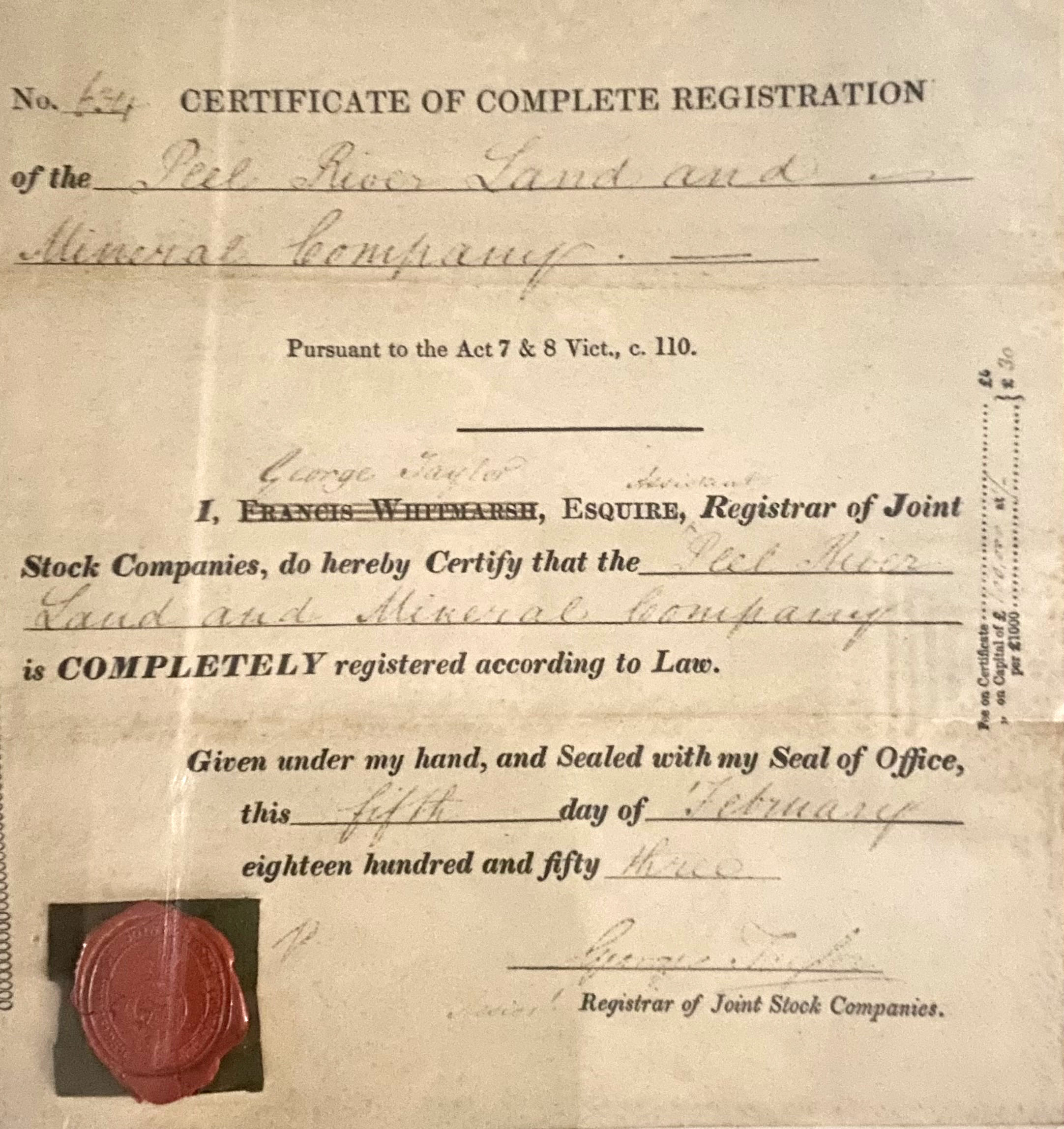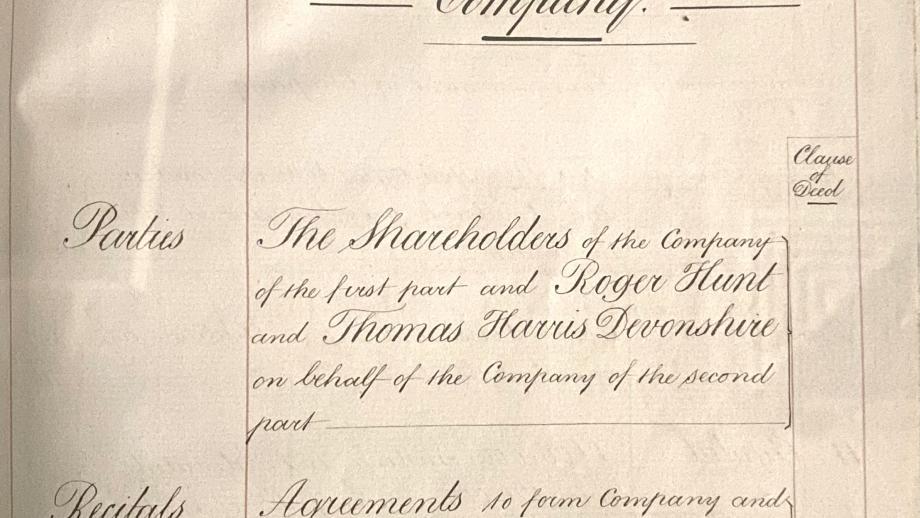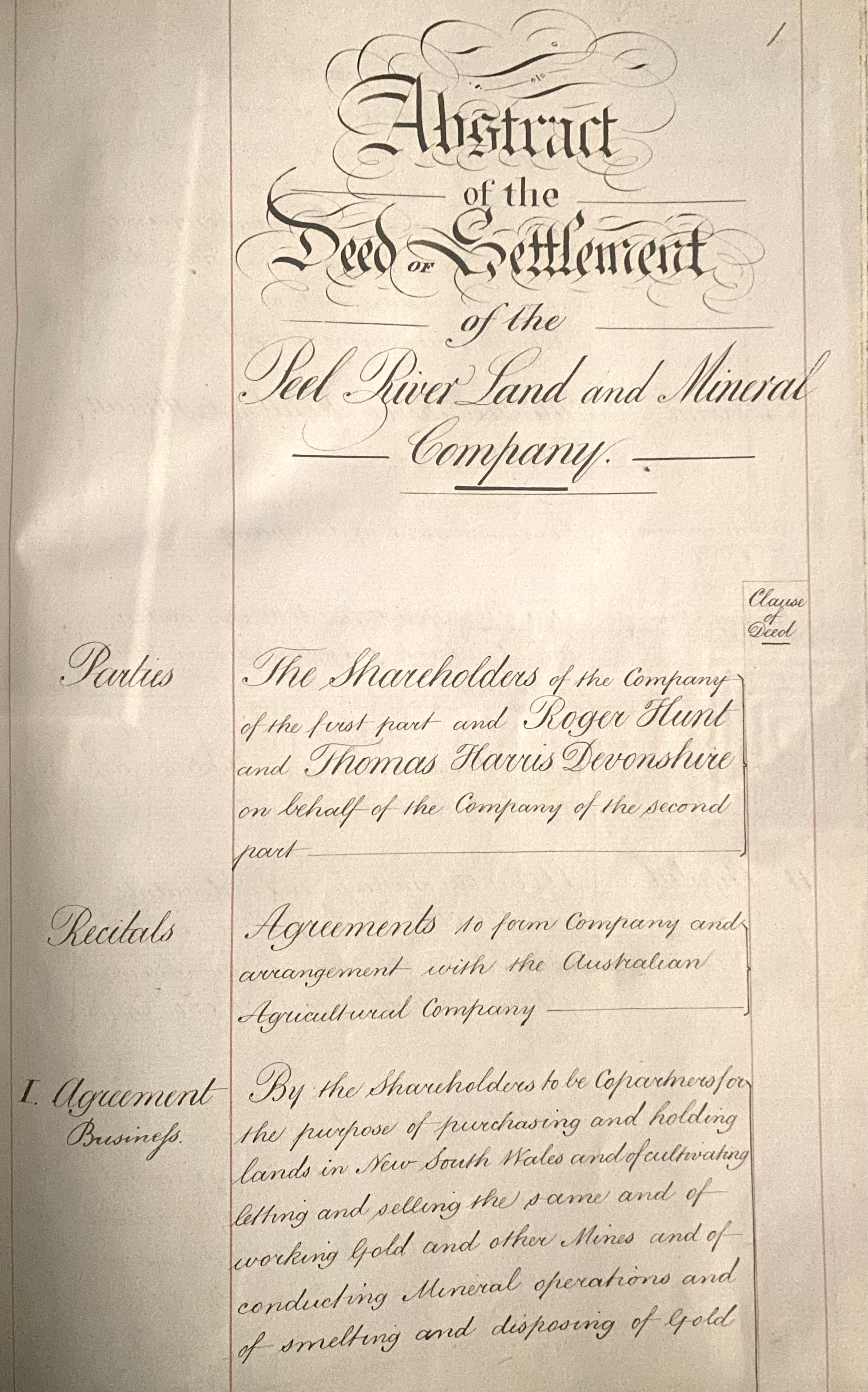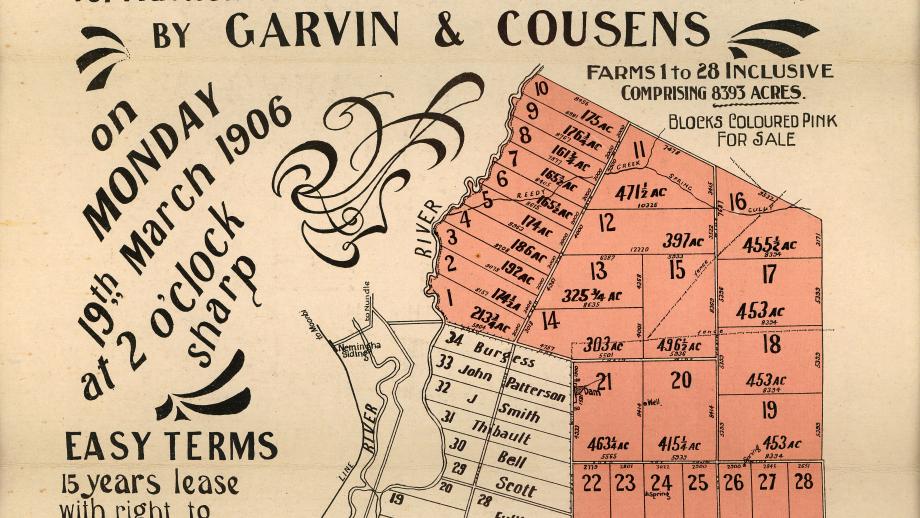The Discovery of Gold and the Formation of the Peel River Land and Mineral Company
Gold was discovered on the Australian Agricultural Company’s Peel Estate in Northern New South Wales in February 1852 by Thomas Laurie and Thomas Renwick, the sons of tenant farmers at Port Stephens who had recently returned from the 1849 California gold rush. The Company promptly started issuing miner’s licences, with a monthly licence costing 30/-. The discovery led to a huge boom in the Company’s shares on the London stock exchange. By the end of 1852, the share price had jumped from £83 to £300.
However, the Company had a significant problem. Under the terms of the Australian Agricultural Company’s Act and Charter, it could not legally mine gold on the Peel Estate. To address this, in February 1853 a new company was formed, The Peel River Land and Mineral Company.
The Australian Agricultural Company offered shares in The Peel River Land and Mineral Company to its existing shareholders, but the two companies operated under different directors and had their own shareholders. The Company's inaugural Chairman and Managing director was Polish explorer and scientist Sir Paul Edmund de Strzelecki.
Initially the Australian Agricultural Company had high hopes for the Peel gold field and leased a square mile of the best land to the Cordillera Company which sent out Cornish miners and machinery on the ship Tory in 1853. Sadly, the Tory was wrecked off the coast of Port Stephens. One child drowned and all the machinery for the Peel venture was lost. The remnants of the expedition finally reached the Peel Estate, but the project was soon abandoned.
One consequence of the gold discoveries was the appointment of German mineralogical surveyor Frederick Odernheimer. Odernheimer travelled from Germany to Australia to conduct a mineralogical survey of all the Peel Estate and produced a very detailed map of the Peel goldfield.
Interest and returns from the Peel goldfield gradually waned and the focus of The Peel River Land and Mineral Company shifted away from mining towards sheep and cattle, with the Company gradually taking up management of pastoral stations across Queensland and the Northern Territory. Some of the stations it leased or bought included Ellangowan on the Darling Downs (1854-1874), Cashmere in the Maranoa Region (1860-1873), Corona near Longreach (1875-1881), Currawillinghi near Angledool (1881-1918), Avon Downs in the Barkly Tablelands (1921-current), Mt Alfred near Warrego (1925-1929), and Mt Margaret near Quilpie (1925-1937). This change in focus accelerated after the government resumption of land across the Peel Estate in the early 1900s.
In the 1930s, the two companies came under joint management in Australia, although stayed under separate management in London until 1960, when the Australian Agricultural Company took over The Peel River Land and Mineral Company.

